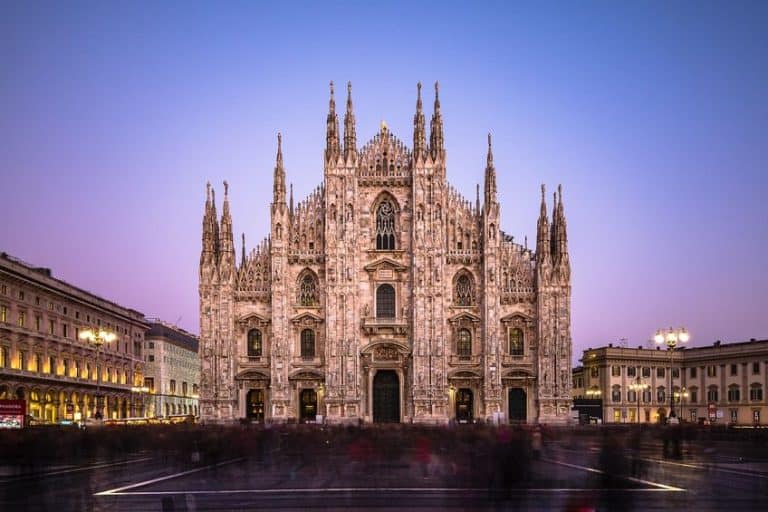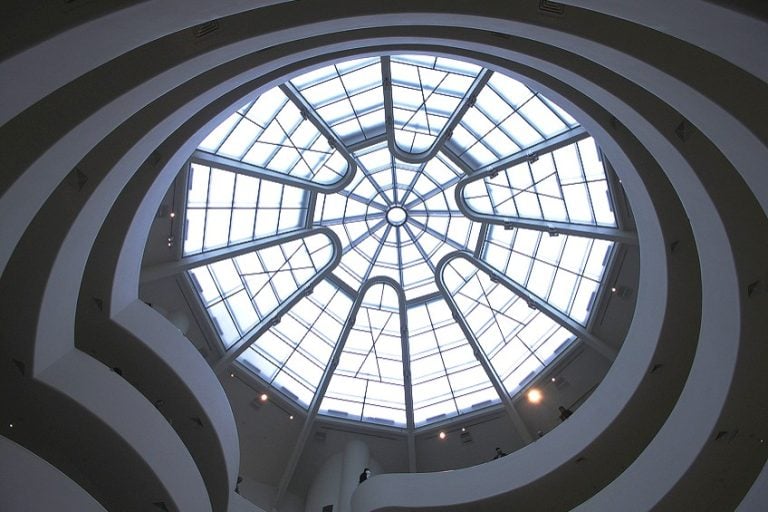Oldest Buildings in London – The Hidden Gems of London
London has a history that stretches back centuries. The city is full of old churches, houses, and public buildings that once served the inhabitants of this historical region. But, what is the oldest building in London today? In this article, we plan to find that out, as well as answer your questions, such as, “what is the oldest house in London and what is the oldest building in the U.K.?”.
What Is the Oldest Building in London?
London is a modern city that offers all the luxuries and amenities of a world-renowned first-world country. Yet, one just needs to take a quick glance behind the skyscrapers and modern facades and you will notice that London is full of old buildings from centuries gone by. Who knows what these walls have seen, what stories they could tell, and what secrets they keep?

Luckily, many of these buildings have been well preserved and are able to tell us much about the lives of those who resided there many generations ago. Their architecture gives us insight into the technological advancements of the day and their appearance provides hints into the aesthetic preferences of their time. Whether a college, a church, or just a house, these buildings embody the eras in which they were constructed and are therefore worth exploring the next time you find yourself in London.
St. Pancras Old Church (c. 4th Century)
| Architect | Alexander Dick Gough (1804 – 1871) |
| Date Constructed | c. 4th century |
| Height (meters) | 27 |
| Function | Church |
| Location | Pancras Road, London, United Kingdom |
While the exact age of St Pancras Old Church is unknown, the church’s beginnings stretch back to the fourth century. St. Pancras Old Church is ranked as the oldest standing structure in London as well as one of England’s earliest houses of worship. Until its renovation in 1819, the church was known as St Pancras Church.
During the English Reformation, it was one of the few in London that permitted Catholics to be buried.
The church is named after a young Christian martyr killed in the fourth century CE, named St. Pancras. It is well-known for its stunning architecture, which incorporates features of numerous styles, including Gothic, Norman, and Victorian. It also has a long musical legacy, with a choir group that has been performing since the 16th century.

St Bride’s Church (c. 6th century)
| Architect | Christoper Wren (1632 – 1723) |
| Date Constructed | c. 6th century |
| Height (meters) | 69 |
| Function | Church |
| Location | London, England |
It’s probable that a Roman structure on this site served as a place of Christian worship. In the sixth century, a church attributed to St Bridgit was established here. It was renovated between the 12th and 15th centuries. After its devastation in the Great Fire of London, the church was rebuilt, this occasion by Christopher Wren, who erected a spire in 1703, making it his highest City church.
Memorial ceremonies for members of the media industry are frequently held here.
The Journalists’ Altar holds prayers for reporters who have gone missing or died in ongoing conflicts. Work on rehabilitating the church’s distinctive spire started in 2013, which is deteriorating from erosion and discoloration, as well as rusting of Wren’s original iron cramps, which is tearing stone faces apart.
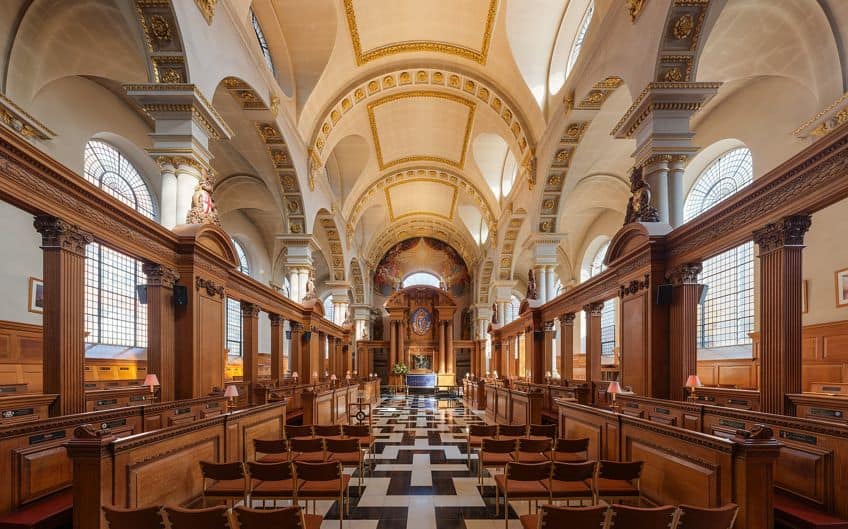
All Hallows By the Tower (675 CE)
| Architect | Unknown |
| Date Constructed | 675 CE |
| Height (meters) | 35 |
| Function | Church |
| Location | Byward Street, London, United Kingdom |
The All Hallows by the Tower church has a long and interesting history that dates back to the 7th century. According to tradition, King Sebert of Essex erected the church around 675 CE, making it one of London’s earliest churches.
The existing structure, on the other hand, originates from the 15th century, with some components from the 7th and 11th centuries evident in the churchyard.
You can see the numerous layers of London’s history in all its wonderful chaos at this immensely old church, which has a Saxon arch, Roman pavement, medieval masonry, and mangled, deformed traces of the Blitz. It also features a museum with objects from the church’s history, such as a Saxon coffin and a reproduction of the first church bell.

White Tower (c. 1066)
| Architect | Gundulf of Rochester (1024 – 1108) |
| Date Constructed | c. 1066 |
| Height (meters) | 27 |
| Function | Royal palace |
| Location | London, United Kingdom |
When William the Conqueror constructed a massive stone tower in the center of his London citadel in the 1070s, vanquished Londoners must have been in awe. The Tower continues to amaze and horrify visitors over 1000 years later. The Tower today attracts over three million tourists every year as the defender of the Royal Jewels, home of the Yeomen Warders, and famous guardians, the ravens.
The Ceremony of the Keys and other ceremonies are still practiced here, and the ghost stories and horrifying tales of execution and torture are still told.
In times of turmoil, kings and queens utilized the Tower to safeguard their belongings and themselves. Until the 1800s, weapons, and armor were created, tested, and kept here. The White Tower also regulated the supply of the nation’s money, and from the time of Edward I until 1810, all coins of the kingdom were minted at the Tower Mint.

Westminster Hall (1097)
| Architect | Charles Barry (1795 – 1860) |
| Date Constructed | 1097 |
| Height (meters) | 29 |
| Function | Palace hall |
| Location | Westminster Palace, London, United Kingdom |
William the Conqueror erected the hall as a royal home, but it was afterward used for a variety of functions, such as courts of law, royal feasts, and political gatherings. It is arguably best known as the scene of numerous major trials, notably Sir Thomas More’s trial in 1535 and King Charles I’s trial in 1649.
It is also recognized for its remarkable architecture, which includes a huge timber roof with hammer-beam trusses running the length of the hall.
The roof was erected in the 14th century and is regarded as one of the world’s best specimens of medieval timber architecture. Westminster hall is a popular tourist destination and history lover location because it provides an insight into the vast and intriguing history of British law and politics.
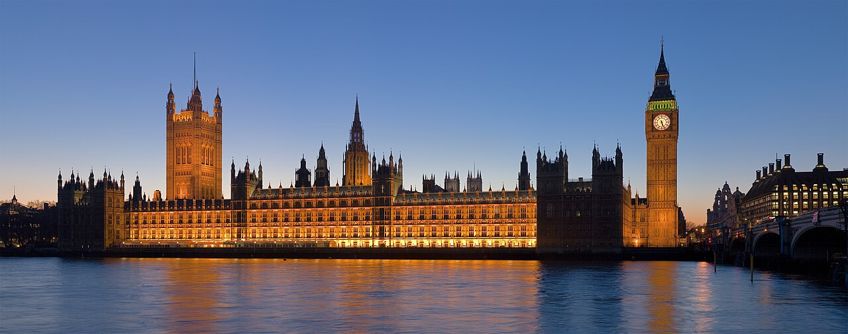
St. Bartholomew the Great (1123)
| Architect | Rahere (c. 12th century) |
| Date Constructed | 1123 |
| Height (meters) | 102 |
| Function | Church |
| Location | Farringdon, London, United Kingdom |
This church was established as part of an Augustinian canon priory and was later enlarged to accommodate a school, a hospital, and a library. The architecture of the church is a blend of Gothic and Romanesque styles, with notable features such as a font from the 13th century, a rood screen from the 15th century, and an altar from the 16th century.
St. Bartholomew the Great was a significant building in English history.
Throughout the Medieval Ages, it was a center of ecclesiastical and cultural life, and it held many major events, including King Henry IV’s coronation feast in 1399. The priory was dismantled during the Reformation, and the building was rescued from demolition by King Henry VIII’s intervention, who converted it into a parish church.
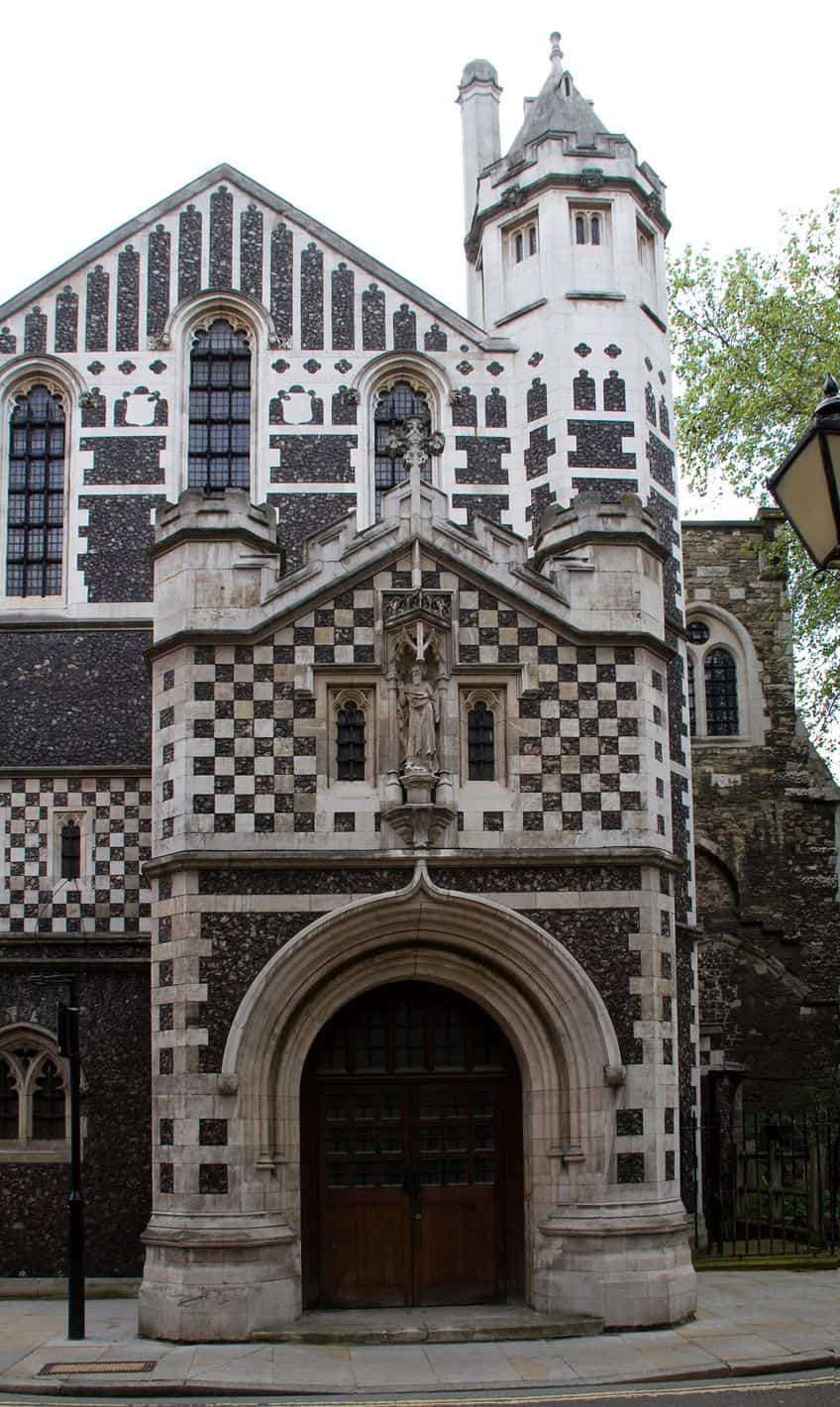
The Old Royal Naval College (c. 1420s)
| Architect | Nicholas Hawksmoor (1661 – 1736) |
| Date Constructed | c. 1420s |
| Height (meters) | 20 |
| Function | Naval college |
| Location | Greenwich, London, United Kingdom |
The Old Royal Naval College was erected in the late 17th century as a hospital for elderly sailors, but it eventually became a naval college and training institution. It is now a significant tourist destination and cultural hub. The Painted Hall, possibly the most renowned structure of the Old Royal Naval Academy, is noted for Sir James Thornhill’s spectacular ceiling paintings.
There are also a variety of historical objects in the hall, such as the marble bust of Admiral Lord Nelson.
The King William Court, the largest structure of the college, was originally constructed as the sailor hospital. It was later used as a naval college and training center, and it today houses a number of cultural and educational institutions.


Hampton Court Palace (1515)
| Architect | Cardinal Thomas Wolsey (1473 – 1530) |
| Date Constructed | 1515 |
| Height (meters) | 60 |
| Function | Palace |
| Location | Richmond Upon Thames, London, United Kingdom |
Hampton Court Palace has housed numerous noteworthy individuals throughout its history, notably King Henry VIII. Several significant historical events have taken place in the palace, such as the Hampton Court Conference in 1604, which helped establish the future of the Church of England. The palace is well-known for its stunning architecture, which combines Baroque and Tudor styles.
It is particularly well-known for its stunning gardens, which span more than 60 acres and consist of a maze, a sunken garden, and several water features.
Guests to Hampton Court Palace can explore the palace’s numerous rooms and suites, which are outfitted with historical furnishings and artworks. During the year, the palace also holds a range of events and exhibitions, such as historical reenactments and plays by performers dressed in period costumes.
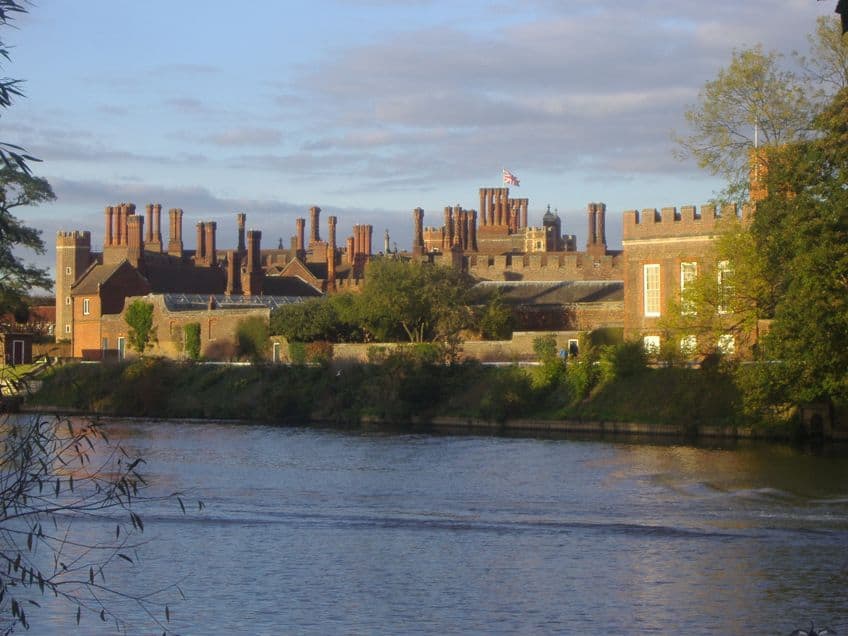
Cloth Fair (1597)
| Architect | Henry Rich (c. the 1500s) |
| Date Constructed | 1597 |
| Height (meters) | Unknown |
| Function | Residence |
| Location | 41 Cloth Fair, London, United Kingdom |
Cloth Fair House is a historic structure in London’s Smithfield neighborhood, next to St. Bartholomew the Great church. The structure comes from the 16th century and is one of the oldest remaining structures in the area and is regarded as the oldest house in London. The Tudor-style property was initially utilized as a private dwelling.
It was called after the Cloth Fair, a prominent fair that took place there during the medieval period.
The structure has an eye-catching gabled front with exquisite carvings and detailed masonry. Cloth Fair House is now a private house and is not accessible to the general public for tours. Yet, its historical relevance and architectural splendor make it a beloved Smithfield landmark. The poet John Milton is believed to have lodged at the residence when he was busy writing Paradise Lost in the 17th century.

The Queen’s House (1616)
| Architect | Inigo Jones (1573 – 1652) |
| Date Constructed | 1616 |
| Height (meters) | 24 |
| Function | Museum |
| Location | Greenwich, London, United Kingdom |
The Queen’s House is a historic royal mansion in the Greenwich neighborhood of London. King James I commissioned it in 1616 as a present for his bride, Anne of Denmark. Unfortunately, because Anne died before the home was finished, it was used as a dwelling for several members of the royal family. It was created by the famous architect Inigo Jones and is regarded as one of England’s best examples of 17th-century Palladian architecture. It’s remarkable for its geometric symmetry and incorporation of classical architectural features like pediments and columns. The Tulip Staircase, the very first geometric self-supporting spiral staircase in Britain, is one of the most iconic elements of the Queen’s Palace. The carved tulip-shaped balusters that embellish it inspired the name.
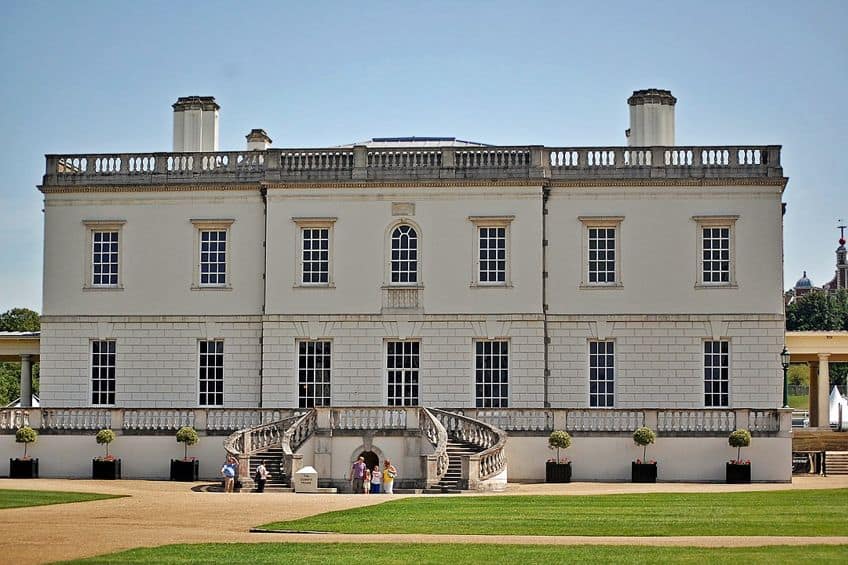
That completes our list of some of the oldest buildings in London. Many of these old structures are churches, and this is because they were usually constructed by the most skilled architects and builders that the church could afford, so they were made to last. They have also been preserved and rebuilt over time, helping to lengthen their legacy and allow many generations to enjoy them.
Frequently Asked Questions
What Is the Oldest Building in London?
The oldest building still standing in London today is St. Pancras Church. This old church, in addition to its cultural and historical value, is also an active house of worship, hosting regular services and activities for the surrounding area. Visitors are welcome to tour the church’s interior and learn about its rich past and continuing legacy. One of St. Pancras Old Church’s most significant characteristics is its graveyard, which is the last resting place of many historical individuals including John Flaxman, the novelist Mary Shelley, and Sir John Soane, the famous architect.
What Is the Oldest Building in the U.K?
The Knap of Howar is a very well-preserved Neolithic village on the island of Papa Westray in Scotland’s Orkney Islands. It is one of Northern Europe’s oldest standing buildings, dating back to roughly 3700 BCE, and is the oldest building in the United Kingdom. The homes are built with flat flagstone roofs, low layered flagstone walls, and grass roofs braced by wooden beams. The Knap of Howar is now a prominent tourist attraction, as well as an important archaeological study site.
Justin van Huyssteen is a freelance writer, novelist, and academic originally from Cape Town, South Africa. At present, he has a bachelor’s degree in English and literary theory and an honor’s degree in literary theory. He is currently working towards his master’s degree in literary theory with a focus on animal studies, critical theory, and semiotics within literature. As a novelist and freelancer, he often writes under the pen name L.C. Lupus.
Justin’s preferred literary movements include modern and postmodern literature with literary fiction and genre fiction like sci-fi, post-apocalyptic, and horror being of particular interest. His academia extends to his interest in prose and narratology. He enjoys analyzing a variety of mediums through a literary lens, such as graphic novels, film, and video games.
Justin is working for artincontext.org as an author and content writer since 2022. He is responsible for all blog posts about architecture, literature and poetry.
Learn more about Justin van Huyssteen and the Art in Context Team.
Cite this Article
Justin, van Huyssteen, “Oldest Buildings in London – The Hidden Gems of London.” Art in Context. May 1, 2023. URL: https://artincontext.org/oldest-buildings-in-london/
van Huyssteen, J. (2023, 1 May). Oldest Buildings in London – The Hidden Gems of London. Art in Context. https://artincontext.org/oldest-buildings-in-london/
van Huyssteen, Justin. “Oldest Buildings in London – The Hidden Gems of London.” Art in Context, May 1, 2023. https://artincontext.org/oldest-buildings-in-london/.




